12 Best Planning Apps to Organise Your Life in 2025
Discover the 12 best planning apps for every need in 2025. Our guide covers features, pricing, and use cases to help you find the perfect organiser.
Calendar0 Team
October 29, 2025

In a world of constant notifications and competing priorities, finding the right tool to manage your time isn't just a luxury-it's essential for focus and success. The challenge is that the sheer number of options can be overwhelming. Which apps genuinely save you time versus just adding another task to your list? If you're looking to take control of your schedule and reduce chaos, exploring various effective time management tools is a great place to start.
This guide cuts through the noise. We've analysed the top 12 best planning apps available to users in Germany, focusing on practical features that fit specific roles, from busy executives and their assistants to detail-oriented engineers and project managers. We move beyond generic feature lists to provide an honest assessment of each app's strengths and limitations.
Here, you will find a clear, scannable breakdown of each platform, complete with screenshots and direct download links. We'll explore which app truly fits your workflow, whether you're coordinating across teams in Microsoft 365, managing client projects as a freelancer, or simply trying to organise your personal life. Our goal is to equip you with the insights needed to choose the perfect planner, helping you reclaim control and confidently master your day in 2025.
1. Calendar0
Best for: Rapid, AI-powered scheduling for professionals juggling multiple calendars.
Calendar0 distinguishes itself among the best planning apps by treating calendar management not as a task, but as an extension of your thought process. It operates from the macOS or Windows menubar, providing a blazing-fast, keyboard-first interface that eliminates the friction of traditional calendar applications. Its core strength lies in its ability to unify disparate Google and Microsoft calendars into a single, cohesive view, using AI to streamline scheduling with remarkable efficiency.
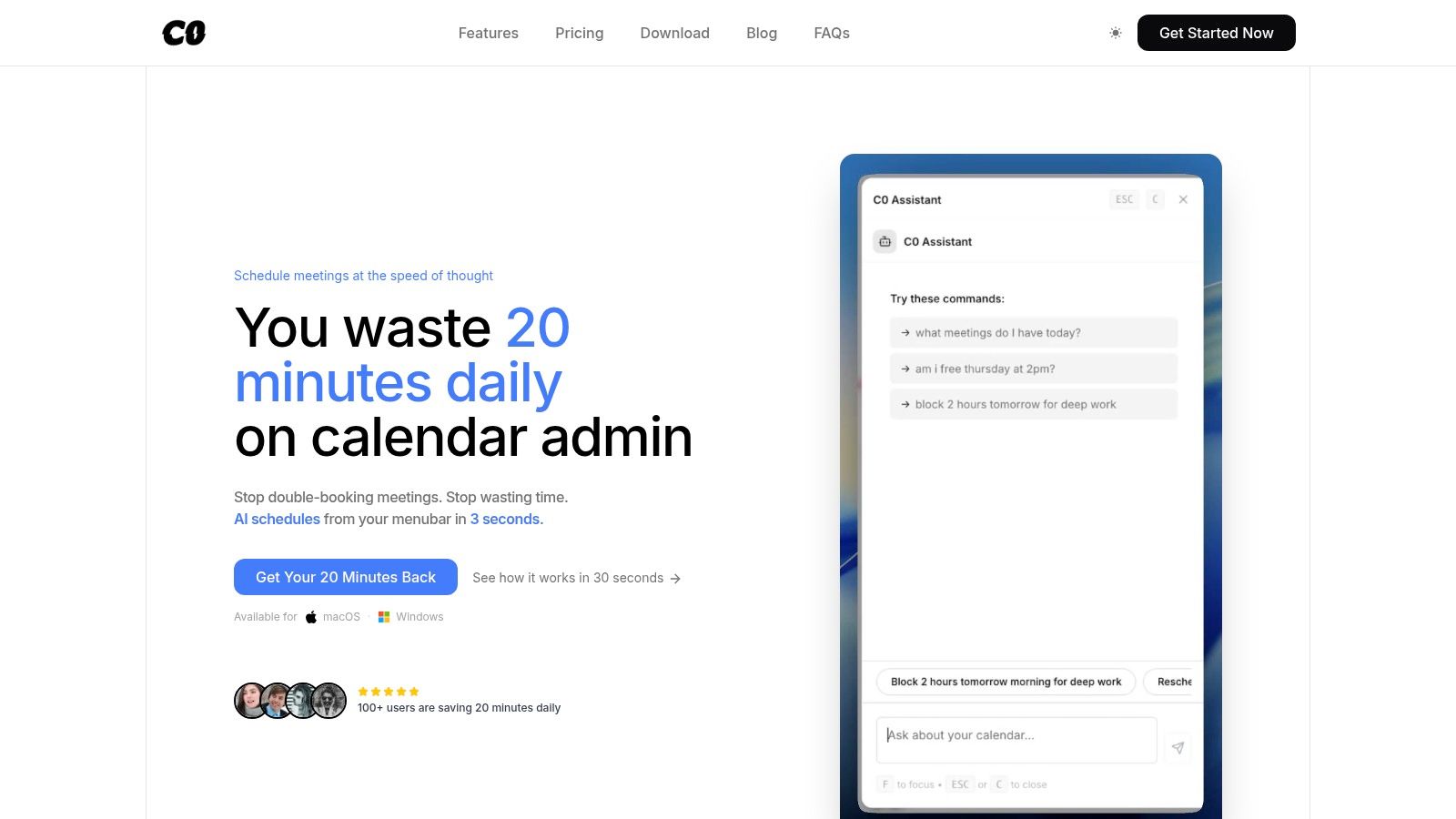
The platform’s natural language processing is a significant advantage. Instead of clicking through multiple menus to create an event, you can simply type a command like “planning meeting with Alex and the engineering team tomorrow at 2 pm” directly into the menubar. Calendar0 parses this, finds the contacts (even with partial names), checks for conflicts across every attendee’s calendar, and drafts the invitation. This AI-driven approach is complemented by powerful day-editing tools, such as drag-and-drop rescheduling and AI time suggestions, allowing you to reorganise your entire day in seconds.
Key Strengths and Use Cases
- Unified Calendar Management: Executive assistants and project managers can see all Google and Microsoft calendars in one place, preventing double-bookings and instantly identifying availability without switching between accounts.
- High-Velocity Scheduling: Founders and consultants who book frequent client calls can create and send invites in under five seconds using natural language, drastically reducing administrative overhead. For those managing complex setups, Calendar0 provides helpful guides on topics like synchronising different calendar types.
- Privacy-First Architecture: The app uses direct OAuth2 authentication and encrypted local tokens, meaning your calendar data is not synced to a third-party cloud server. This is a critical feature for users in security-conscious industries.
- Protected Focus Time: A built-in feature helps you block out periods for deep work, automatically declining meetings that conflict with these protected blocks, ensuring your productivity is prioritised.
Pricing and Availability
Calendar0 offers a flexible pricing model. A free Starter tier provides the full calendar view and three AI commands, which is ideal for testing the core functionality. For unlimited use, you can choose a monthly subscription or a one-time Lifetime Access purchase. All paid plans include a 14-day money-back guarantee.
Potential Limitations
The primary limitation is its desktop-only nature; there is no dedicated mobile app, which could be a drawback for those who need to manage their schedule heavily while on the go. Additionally, as a newer application, some integrations like Apple Calendar are still in development, so larger enterprises may want to verify its current feature set meets their specific needs.
Website: https://www.calendar0.app
2. Apple App Store (Germany)
For professionals and teams in Germany operating within the Apple ecosystem, the App Store is the primary and most secure gateway to discovering the best planning apps. It’s not a single app, but the official marketplace where iPhone, iPad, and Mac users find, purchase, and manage their productivity software. Its stringent app review process and clear privacy labels provide a layer of trust that is essential when handling sensitive schedule and project data.
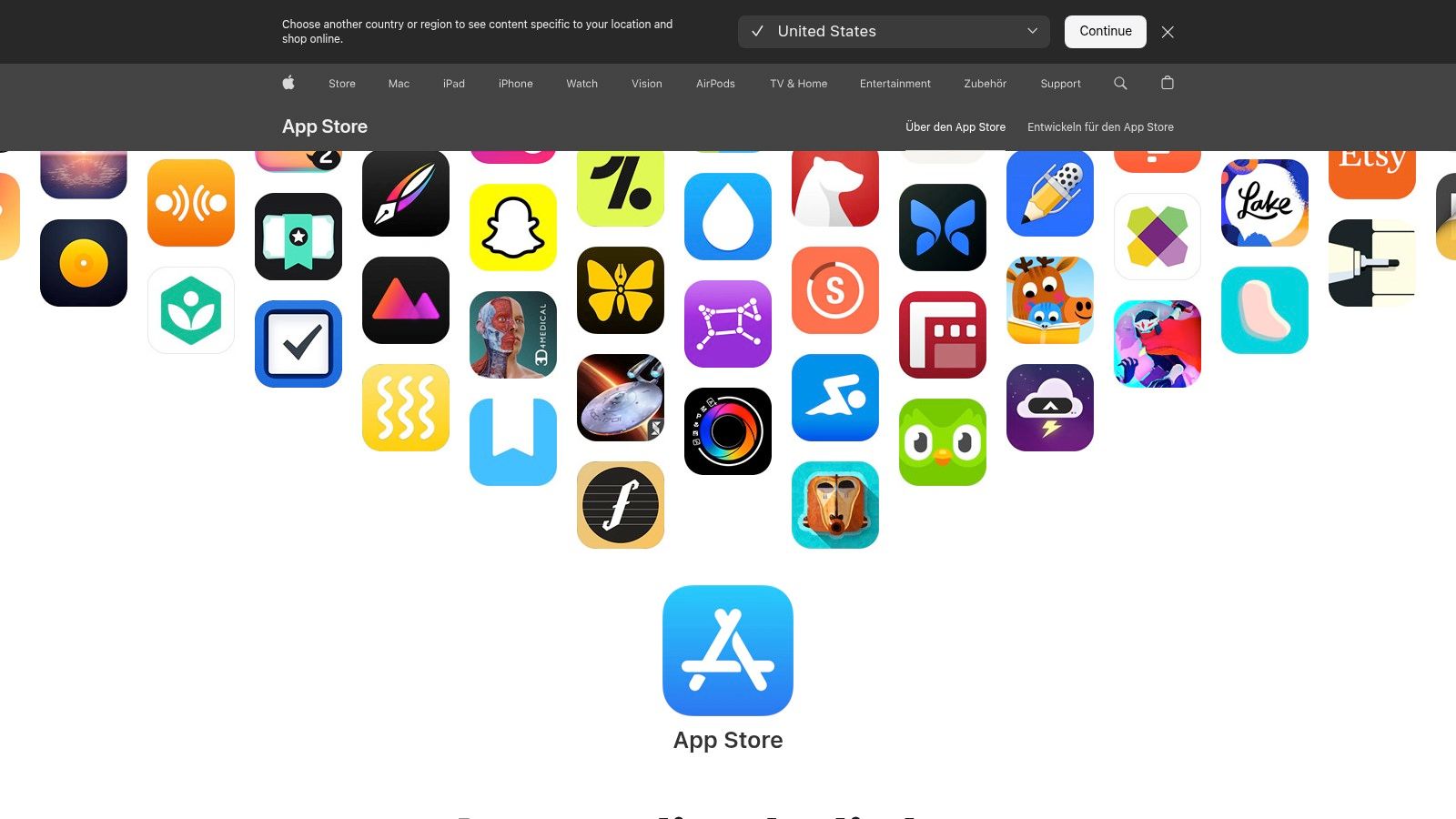
The platform stands out for its seamless integration across Apple devices. Subscriptions and purchases are tied to a single Apple ID, simplifying management and allowing for Family Sharing of eligible apps. The user experience is highly curated, with editorial features and themed collections that often highlight top-tier planning and calendar applications, making discovery intuitive for busy professionals.
Key Considerations
- App Discovery: Utilise the "Today" and "Apps" tabs for curated lists and stories. Searching for specific functions like "Kanban" or "Gantt chart" often yields better results than generic terms.
- Pricing & Access: While many apps are free, premium tools often require a subscription or one-time purchase. Note that prices can occasionally be higher than direct web purchases due to Apple's commission, a factor worth checking for budget-conscious teams.
- Security: The App Store's vetting process and mandatory privacy "nutrition labels" offer transparency on how apps handle your data-a critical feature for organisational use.
Website: https://www.apple.com/de/app-store
| Pros | Cons |
|---|---|
| Safest source for vetted iOS/macOS apps | Premium apps may cost more than on the web |
| Unified subscription and refund management | Limited to the Apple ecosystem |
| Curated editorials aid in discovering new tools | Alternative EU distribution requires specific setup |
3. Google Play Store (Germany)
For professionals and teams in Germany utilising the Android ecosystem, the Google Play Store is the essential and official marketplace for discovering the best planning apps. It serves as the primary hub where Android users can find, purchase, and manage their productivity software. The platform’s user review system, integrated security via Google Play Protect, and clear app permissions provide a trusted environment for managing sensitive project and scheduling data.
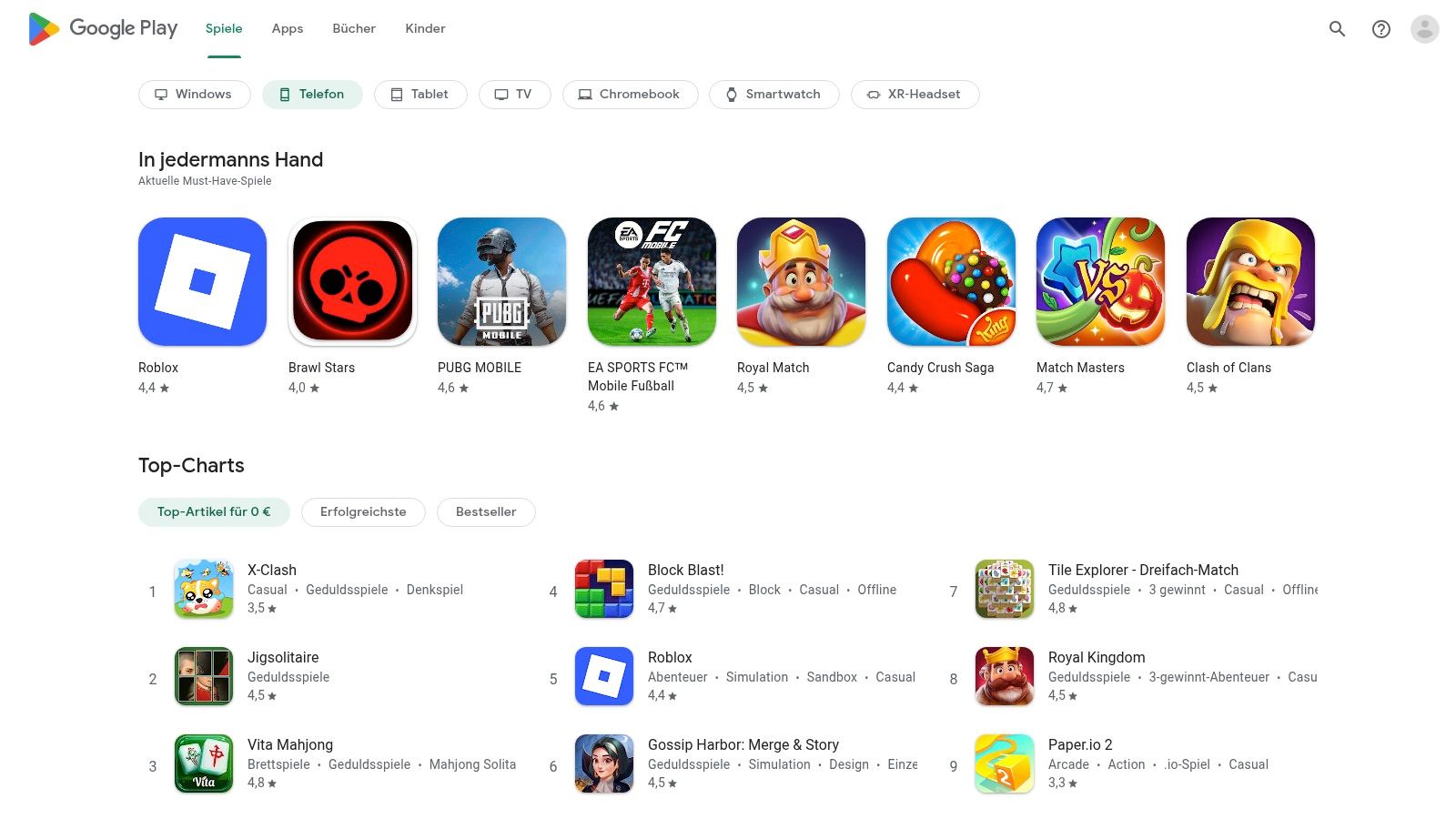
The platform’s strength lies in its vast selection and integration with the Google account, which simplifies payments and subscription management across all certified Android devices. The storefront is localised for the German market and often features curated collections and app recommendations tailored to user behaviour, making it easier to find effective planning tools. As many users rely on Google's own calendar, it is also important to learn more about Google Calendar sync options to integrate third-party apps effectively.
Key Considerations
- App Discovery: Browse the "Top charts" and "Categories" sections for popular productivity tools. Using specific search terms like "agile project board" or "shared team calendar" will yield more precise results.
- Pricing & Access: Many planning apps offer a free or freemium model. Payments are processed through the linked Google account, supporting various methods including credit cards and PayPal. Be aware that your account's country setting dictates app availability and pricing.
- Security: Google Play Protect scans apps for malicious behaviour. Always review an app's required permissions before installation to understand what data it can access on your device.
Website: https://play.google.com/store?hl=de&gl=DE
| Pros | Cons |
|---|---|
| Most planning apps fully support Android and receive frequent updates | Country settings can affect purchases and app availability |
| Straightforward installs on Google-certified Android devices | Gift cards and store balances are region-locked |
| Huge selection of both free and paid applications | App quality can vary more than on curated stores |
4. Setapp Mobile
For professionals in the European Union looking for an alternative to the traditional App Store model, Setapp Mobile offers a compelling proposition. It functions as a curated, subscription-based marketplace for iOS apps, allowing users in regions like Germany to access a collection of premium productivity and planning apps for a single monthly fee. This is particularly useful for those who want to experiment with multiple high-quality tools without committing to individual purchases or numerous subscriptions.

The platform stands out by bundling various applications, including some of the best planning apps, into one predictable cost. This "all-in-one" approach simplifies app management and budgeting for power users and teams. The service, which aligns with the EU's Digital Markets Act (DMA), provides a streamlined user experience with a German interface available. Its catalogue is carefully selected, ensuring that the apps included meet a high standard of quality and utility, making discovery of new planning tools more efficient.
Key Considerations
- Access & Requirements: The service is exclusive to the EU and requires users to have an EU Apple ID and iOS 17.4 or newer. You must also be physically located within the EU to install and update apps from the marketplace.
- App Discovery: Explore the "Productivity" category to find powerful planning and task management tools. The 7-day free trial is an excellent way to test if the included apps fit your specific workflow before committing to a subscription.
- Cost-Effectiveness: Evaluate if the combined value of the apps you would use from the catalogue exceeds the monthly subscription fee. For users who frequently try or rely on multiple premium apps, it presents significant savings.
Website: https://setapp.com/mobile
| Pros | Cons |
|---|---|
| Predictable monthly cost to access multiple planning apps | iPhone only; iPad support is not yet included |
| Ideal for power users testing several tools before settling | Installation and updates require physical presence in the EU |
| Curated selection of high-quality, vetted applications | App selection is limited compared to the entire App Store |
5. Todoist
For individuals and teams seeking a powerful yet straightforward task manager, Todoist stands as one of the best planning apps available. It excels with its clean interface and robust cross-platform synchronisation, making it a reliable choice for users in Germany and across the EU. Its core strength lies in turning complex to-do lists into manageable tasks using natural-language input, which allows users to schedule events like "Team meeting every Tuesday at 10am" with ease.
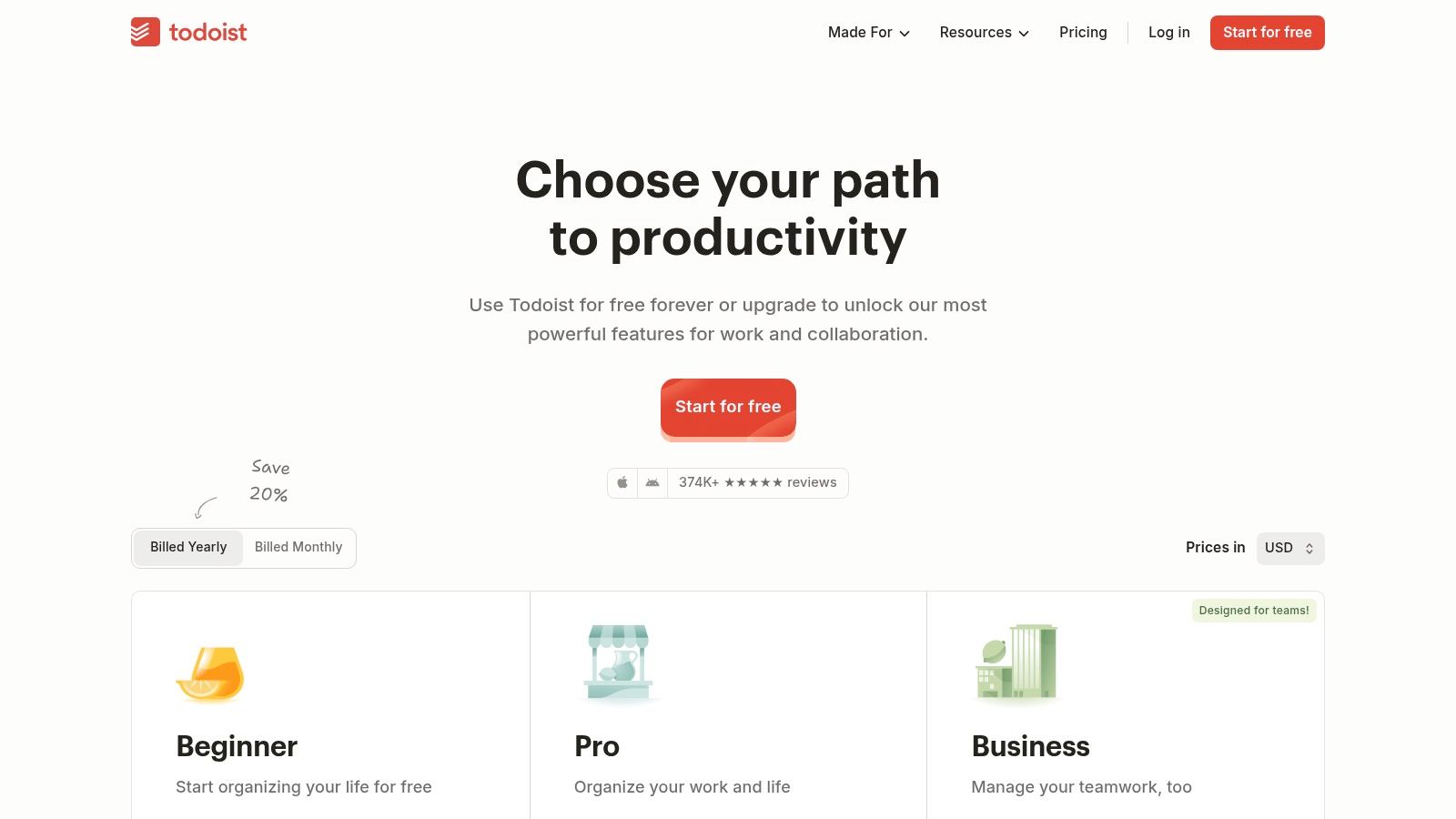
The platform is highly organised, allowing tasks to be structured into projects, sections, and even Kanban-style boards. This flexibility supports various workflows, from simple personal errands to detailed project management. With powerful labels and filters, professionals can quickly create custom views to focus on what matters most, whether it's high-priority tasks for the day or upcoming client deadlines. Its long-standing reputation for reliability ensures that your data is always in sync across all devices.
Key Considerations
- Task Organisation: Use projects for broad goals and sections or sub-tasks to break them down. Labels (e.g.,
@email,@urgent) combined with filters create powerful, saved views for recurring checks. - Pricing & Access: A capable free version exists, but features like reminders, filters, and project templates are behind the Pro and Business tiers. Todoist bills in EUR and can support SEPA payments for business accounts upon request, which is a key advantage for European companies.
- Integrations: Todoist connects seamlessly with calendars (Google Calendar, Outlook), email clients, and automation tools like Zapier, embedding task management directly into your existing workflow.
Website: https://todoist.com/pricing
| Pros | Cons |
|---|---|
| Reliable sync and established user base | Most useful features are gated behind paid tiers |
| Supports EUR billing and can support SEPA | Some advanced team features require subscription |
| Excellent natural-language task creation | The free version's project limits can be restrictive |
6. TickTick
For professionals seeking a powerful all-in-one organiser that merges tasks, calendars, and focus tools, TickTick is a standout choice. It consolidates daily to-do lists, habit tracking, and project management into a single, cohesive interface. The platform excels at providing a detailed view of your day, integrating tasks directly into a calendar view and allowing for precise time-blocking with task duration settings.
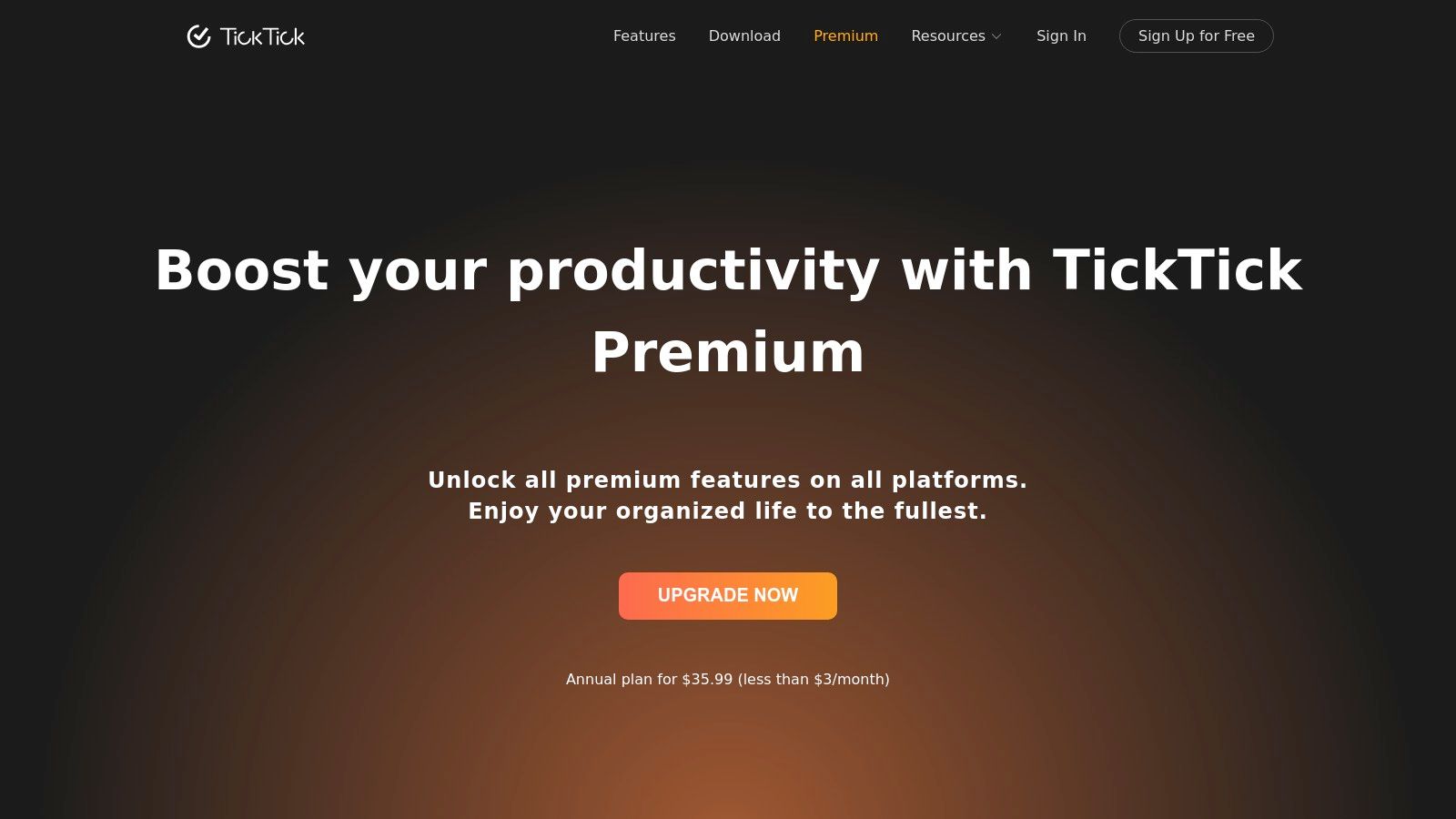
What sets TickTick apart is its built-in productivity suite, which includes a Pomodoro timer and a habit tracker. This integration allows users to move seamlessly from planning their tasks to focusing on their execution without leaving the app. With powerful widgets for mobile devices and robust cross-platform synchronisation, it is one of the best planning apps for maintaining a unified workflow across desktop and mobile.
Key Considerations
- Integrated Tools: Leverage the built-in Pomodoro timer to focus on specific tasks directly from your to-do list. Use the habit tracker to build consistent routines alongside your professional and personal projects.
- Pricing & Access: TickTick offers a generous free tier. The Premium subscription unlocks advanced features like calendar views and custom filters. Be aware that pricing can differ slightly between the direct website purchase and in-app purchases via mobile app stores.
- Customisation: Use custom Smart Lists with filters to create dynamic views of your tasks. Organise projects using both list and Kanban board formats to suit different workflow styles.
Website: https://ticktick.com/upgrade
| Pros | Cons |
|---|---|
| Feature-rich at a competitive price | Pricing can differ by platform/region |
| Combines tasks, calendar, and focus tools | Rare reports of price differences on platforms |
| Excellent cross-platform apps with rich widgets | Some advanced features are behind the paywall |
7. Things (Cultured Code)
For the discerning professional who values premium design and operates exclusively within the Apple ecosystem, Things is an exceptional choice. Developed in Germany by Cultured Code, this award-winning task manager excels at personal organisation, offering a beautifully polished and intuitive interface. It’s not just another to-do list; it’s a structured system designed to bring clarity to your daily and long-term goals through its clean Projects, Areas, and Today views.
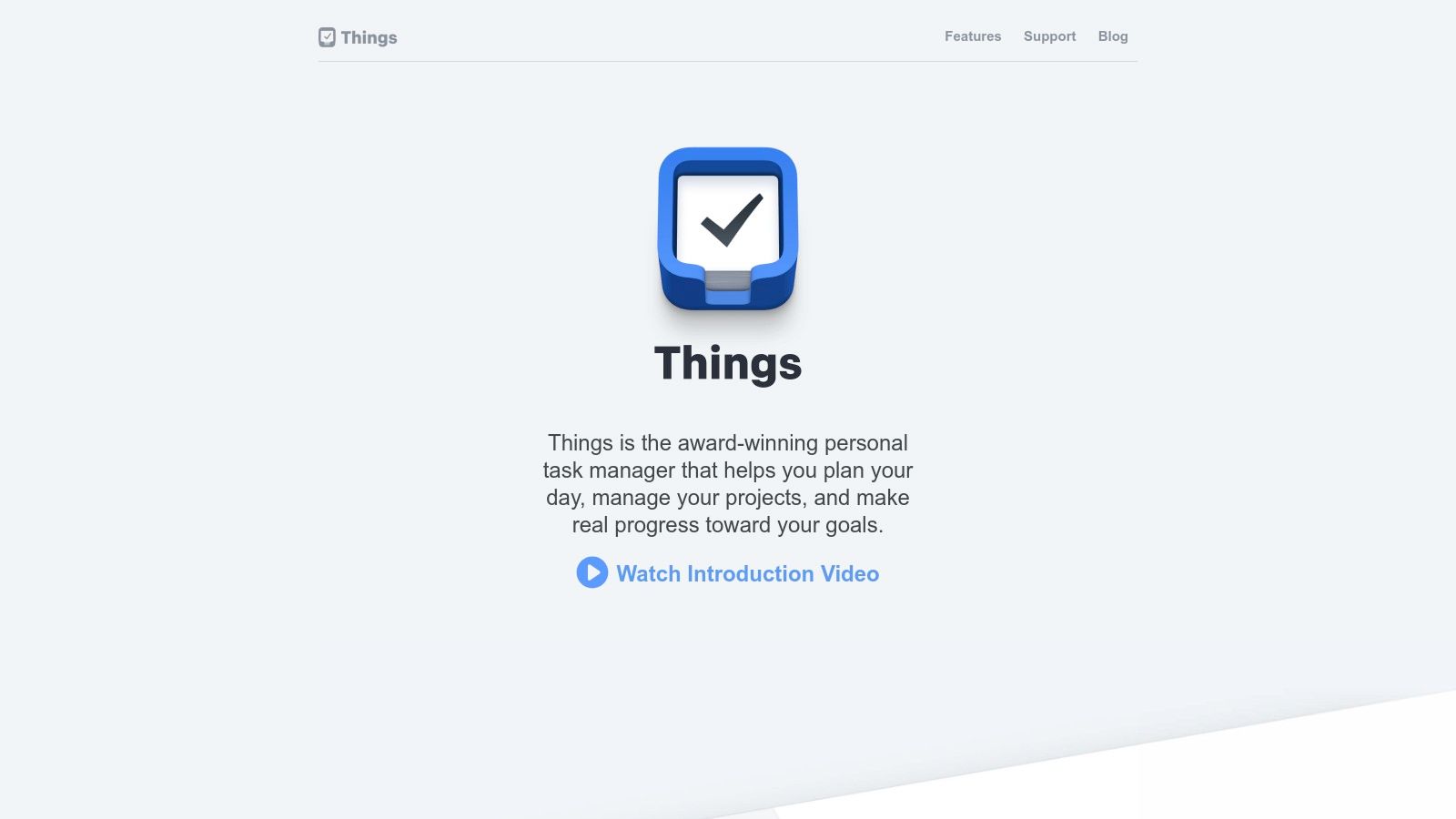
Things stands out with its one-time purchase model, a refreshing departure from the subscription-heavy market of planning apps. The seamless synchronisation across iPhone, iPad, Mac, and Apple Watch ensures your tasks are always up to date, no matter which device you are using. Its thoughtful features, like Quick Find for fast task capture and Mail to Things integration, are designed to reduce friction and help you stay focused on execution rather than app management.
Key Considerations
- Task Organisation: Use "Areas" to separate high-level life categories (e.g., 'Work', 'Personal') and "Projects" for multi-step goals within them. Checklists within tasks are perfect for granular sub-items.
- Pricing & Access: Things is sold separately for Mac, iPhone/Apple Watch, and iPad. This one-time purchase per platform grants you lifetime access and all future updates without a recurring fee.
- Integration: While it lacks direct team collaboration features, its integration with Apple's ecosystem is superb. Utilise native Shortcuts and Calendar integration to automate workflows and view your schedule alongside your tasks.
Website: https://culturedcode.com/things/
| Pros | Cons |
|---|---|
| One-time purchase - no recurring subscription | Apple-only (no Windows or Android support) |
| Premium, polished design and performance | Collaboration features are very limited |
| Ideal for deep personal planning and focus | Each app (Mac, iPhone, iPad) is sold separately |
8. Microsoft To Do
For professionals deeply embedded in the Microsoft 365 ecosystem, Microsoft To Do serves as an essential, free, and seamlessly integrated task manager. It excels at bridging the gap between daily task lists and the broader Outlook environment, transforming flagged emails directly into actionable tasks. This direct integration makes it one of the best planning apps for users who want to centralise their commitments without leaving their primary workspace.
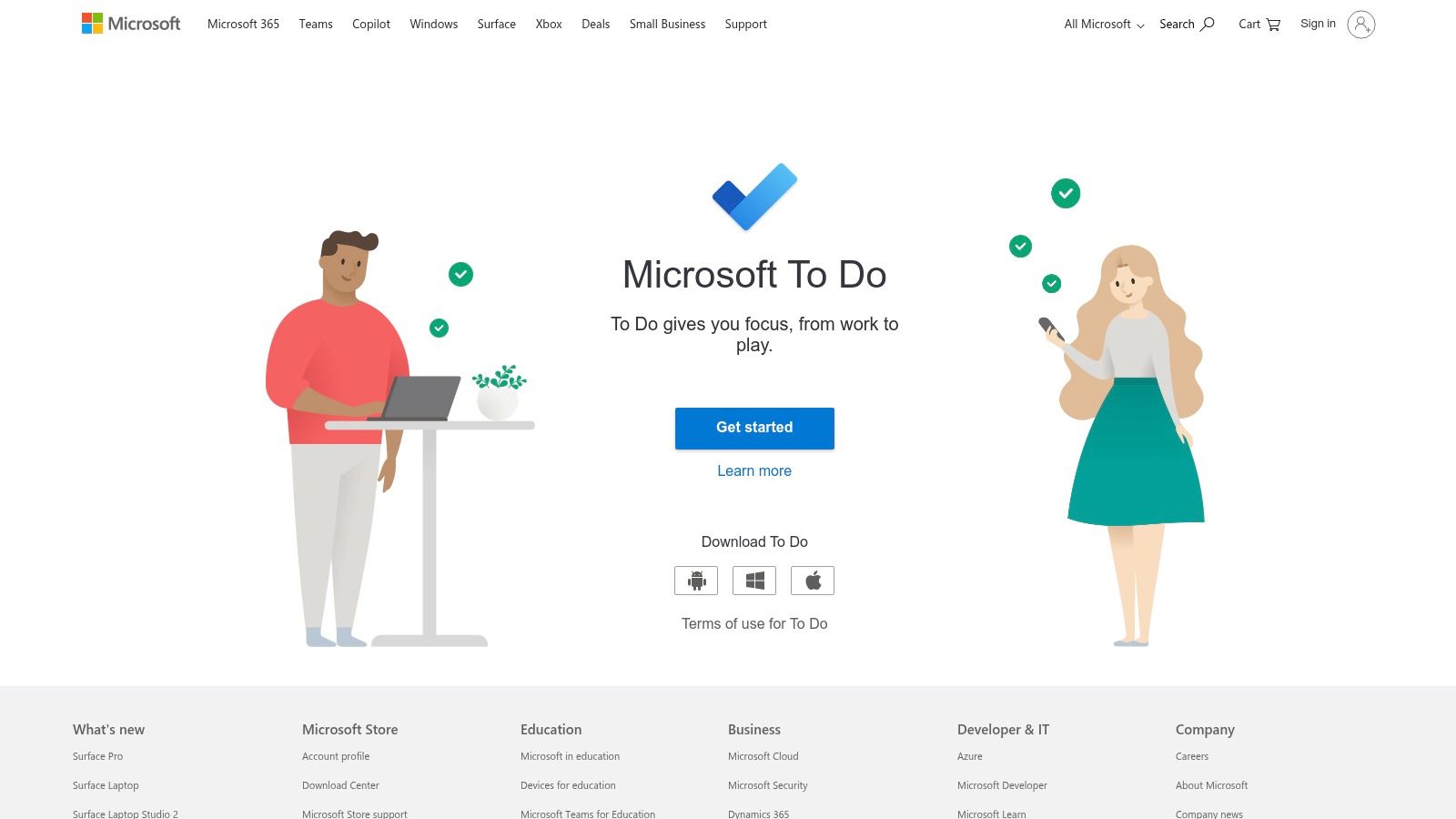
The platform's strength lies in its simplicity and focus on daily organisation. The "My Day" feature provides a clean slate each morning, encouraging users to mindfully select and prioritise tasks for the day ahead. Its cross-platform availability ensures that lists and reminders are consistently synchronised across all devices, from a Windows desktop to an iPhone, making it a reliable companion for both personal and professional planning.
Key Considerations
- Outlook Integration: The standout feature is its native synchronisation with Outlook Tasks. Flagging an email in your Outlook inbox automatically creates a corresponding task in To Do, a powerful workflow for managing action items derived from communications. You can even learn more about how to schedule emails in Outlook to further streamline this process.
- Pricing & Access: Microsoft To Do is completely free with a Microsoft account. There are no premium tiers or hidden costs, making it an accessible and budget-friendly choice for individuals and teams of any size.
- Use Case: It is ideal for individual task management, daily planning, and simple shared lists. While it supports sub-tasks and file attachments, it lacks advanced project management tools like Gantt charts or complex dependencies found in specialised software.
Website: https://to-do.microsoft.com
| Pros | Cons |
|---|---|
| Free and tightly integrated with Outlook | Fewer power-user features than paid apps |
| Easy list sharing and reliable cross-device sync | Limited advanced project management capabilities |
| Clean, user-friendly interface | Integration is primarily focused on Microsoft 365 |
9. Notion
Notion is a uniquely flexible, all-in-one workspace that transcends traditional planning by merging tasks, calendars, documents, and databases. For professionals who need a central hub for everything from personal goal tracking to complex team roadmaps, it offers an unparalleled level of customisation. Its block-based system allows users to build the exact planning tools they need, making it one of the most adaptable and powerful planning apps available.
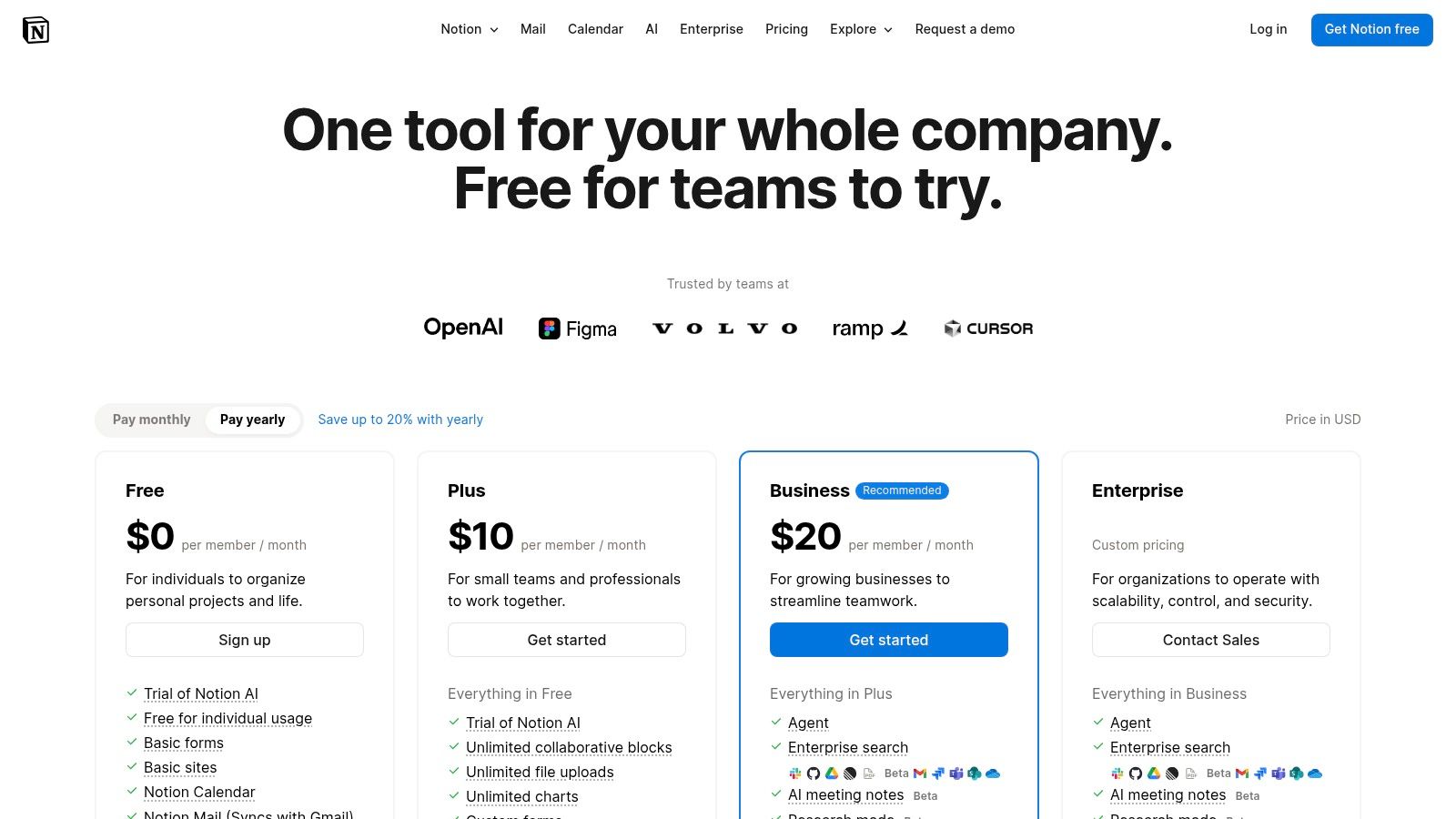
The platform’s strength lies in its database functionality, which can be visualised as a calendar, Kanban board, timeline, or list. This allows teams to manage project sprints, content calendars, and personal schedules within a single, interconnected system. While its extensive capabilities can present a steep learning curve for those seeking simple to-do lists, its vibrant template community provides ready-made solutions for nearly any planning scenario, from meeting notes to full-scale project management.
Key Considerations
- Customisation: Start with a template from Notion’s gallery to understand its structure. You can then modify databases, views, and properties to fit your specific workflow rather than building from scratch.
- Pricing & Access: A generous free plan is available for personal use. Team plans unlock advanced collaboration features, while the newer Notion AI tools for summarisation and content generation are available as a paid add-on to any plan.
- Complexity: For simple task management, Notion can feel over-engineered. It shines best when used as a central knowledge base and project hub, where its interconnected pages and databases add significant value.
Website: https://www.notion.so/pricing
| Pros | Cons |
|---|---|
| Highly customisable and scalable from personal to team planning | Can be complex to set up for simple planning needs |
| Active template ecosystem and frequent feature updates | Some advanced features and AI are gated to higher paid tiers |
| Combines documents, databases, and tasks in one tool | Offline functionality can be limited compared to dedicated apps |
10. Trello
For teams and individuals seeking a highly visual and intuitive way to organise tasks, Trello stands as a leading choice among the best planning apps. It is built around the Kanban board methodology, using a simple system of boards, lists, and cards to represent projects, stages, and individual tasks. This visual approach makes it incredibly easy to see the status of work at a glance, moving cards from "To Do" to "Done" in a satisfyingly simple workflow.
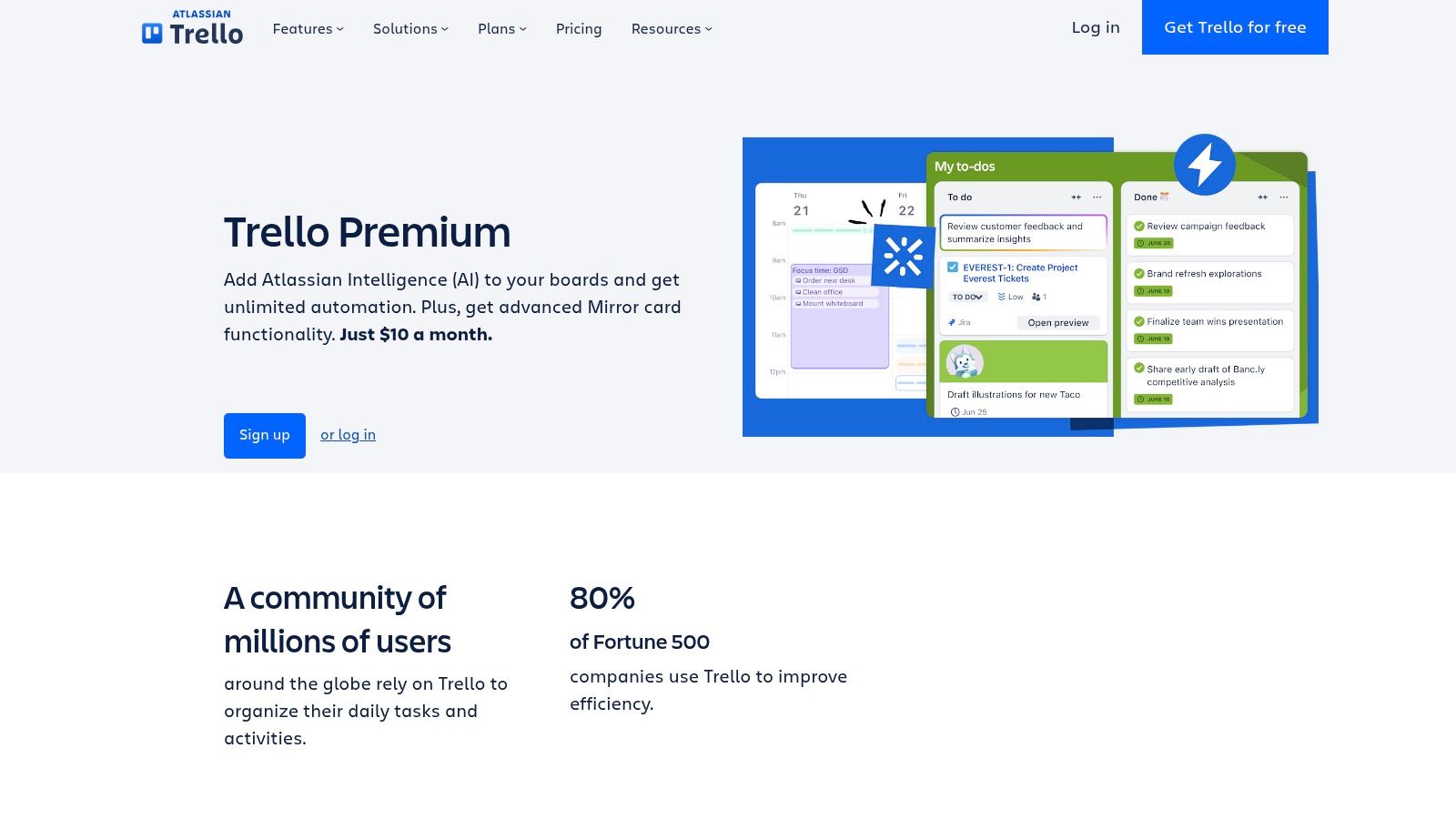
Trello’s strength lies in its flexibility and ease of use, making it accessible for non-technical users while remaining powerful enough for complex project management. Its "Power-Ups" system allows for extensive customisation, integrating with tools like Slack, Google Drive, and Jira. For more advanced planning, Premium plans unlock different perspectives on your work, including Calendar, Timeline, and Table views, transforming a simple board into a comprehensive planning hub.
Key Considerations
- Views & Perspectives: The core of Trello is the Kanban board. For Gantt-style timelines, calendar-based scheduling, or spreadsheet-like tables, an upgrade to a paid plan is necessary.
- Automation: Trello's built-in automation, Butler, can handle repetitive tasks like moving cards, applying labels, or setting due dates based on triggers you define, saving significant administrative time.
- Pricing & Access: The free tier is very generous for personal use or small teams. Premium and Enterprise tiers introduce advanced features, unlimited boards, and stricter security controls, but the enterprise option has minimum user seat requirements.
Website: https://trello.com/premium
| Pros | Cons |
|---|---|
| Very easy to learn and excellent for visual planning | Advanced views and controls require Premium |
| Generous free tier for individuals | Enterprise tier involves minimum spend/seat thresholds |
| Extensive integrations through Power-Ups | Can become cluttered on very complex projects |
11. Asana
Asana is a comprehensive work management platform designed for team-focused planning, from daily tasks and projects to long-term strategic goals. While it excels in a collaborative environment, its powerful features also make it one of the best planning apps for individuals managing complex personal or professional workflows. It offers a centralised hub for coordinating tasks, monitoring progress across teams, and aligning everyone's work with overarching business objectives.
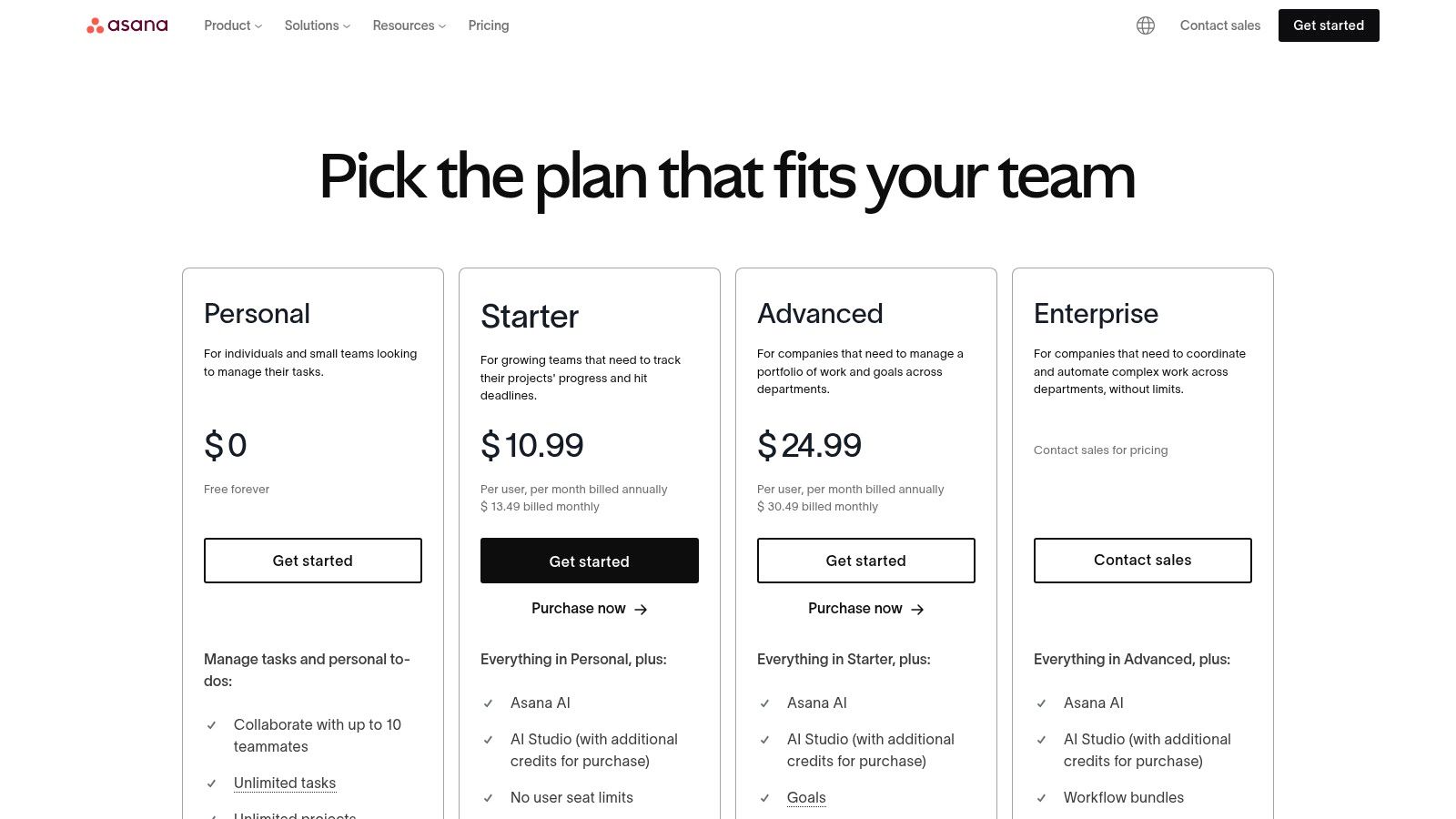
The platform’s strength lies in its visual and flexible project views, including List, Board, Calendar, and a Timeline view that functions like a Gantt chart. This versatility allows teams and individuals to organise work in the way that best suits their needs. With features like Portfolios for high-level project oversight, advanced reporting, and a vast library of integrations, Asana scales from a simple task list to a full-fledged organisational planning tool.
Key Considerations
- Workflow Automation: Use Asana’s automation rules to streamline repetitive tasks, such as assigning work, updating statuses, or moving tasks between project stages, which saves significant time.
- Pricing & Access: Asana offers a robust free tier for individuals or small teams. However, advanced features like Timelines, custom fields, forms, and native time tracking are locked behind paid, per-seat subscription plans.
- Implementation: Leverage the extensive template library for common workflows like event planning, product launches, or content calendars to get started quickly without building projects from scratch.
Website: https://asana.com/pricing
| Pros | Cons |
|---|---|
| Strong cross-team planning and reporting capabilities | Most planning power is in paid tiers |
| Rich template library and enterprise security options | Per-seat pricing can become costly for large teams |
| Multiple project views (List, Board, Timeline) | Advanced features require upgrading from the free plan |
12. ClickUp
ClickUp positions itself as an all-in-one work operating system, designed to consolidate tasks, documents, goals, and communication into a single, unified platform. For teams looking to replace a fragmented toolkit with one of the most feature-dense planning apps available, ClickUp offers an ambitious solution. It provides a highly customisable environment where projects can be visualised through lists, boards, calendars, Gantt charts, and timelines, catering to diverse workflow preferences from agile development to marketing campaign management.
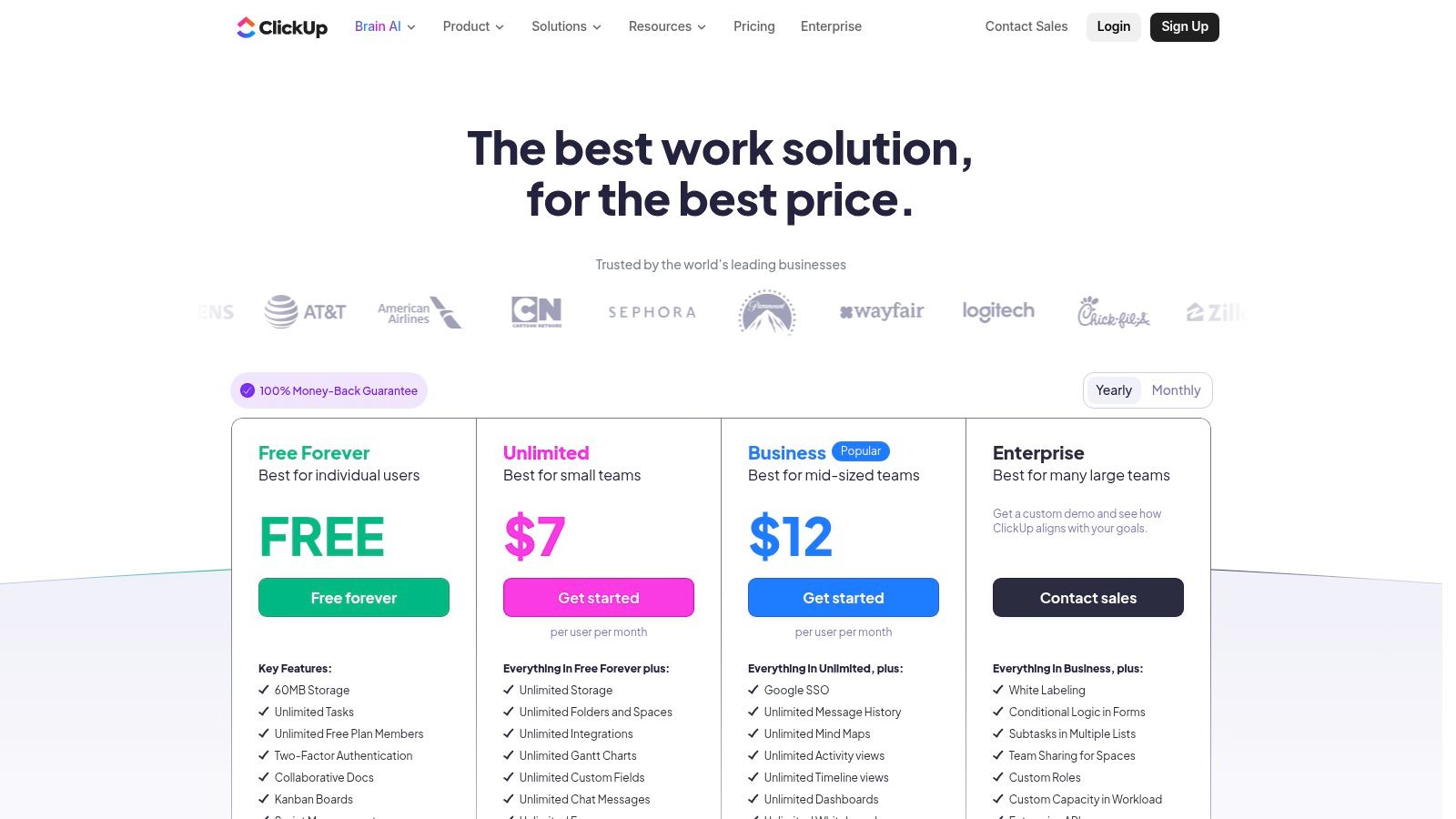
The platform's strength lies in its sheer breadth of capabilities, including integrated Docs for wikis, native time tracking, and powerful automations that streamline repetitive work. For organisations in Germany and the EU, the availability of EU data residency on higher-tier plans is a critical compliance feature. The continuous addition of new features, like ClickUp AI, demonstrates a commitment to evolving with modern productivity demands, making it a compelling choice for scaling teams.
Key Considerations
- Onboarding: The platform's extensive feature set can present a steep learning curve. New users should invest time in the template library and tutorials to get started efficiently.
- Pricing & Access: ClickUp offers a generous free tier, but advanced features like Gantt charts, custom permissions, and EU data hosting are reserved for its paid plans. Be mindful that pricing and role structures can change, sometimes affecting guest access.
- Customisation: Leverage custom fields and statuses to tailor workflows precisely to your team's needs. This flexibility is a core advantage but requires a clear setup strategy to avoid complexity.
Website: https://clickup.com/pricing
| Pros | Cons |
|---|---|
| Feature-dense platform with rapid product updates | Can feel complex and overwhelming for new users |
| Flexible data residency options (including EU) | Occasional pricing/role changes have affected guest access |
| Highly customisable views for any workflow | Performance can occasionally lag with complex projects |
Top 12 Planning Apps — Feature Comparison
| Product | Core features | UX & Quality (★) | Price & Value (💰) | Target (👥) | Unique selling point (✨) |
|---|---|---|---|---|---|
| Calendar0 🏆 | Unified Google+Microsoft view, natural‑language invites, menubar + drag/drop | ★★★★☆ — blazing fast, keyboard‑first | Free Starter; one‑time Lifetime or monthly; 14‑day refund 💰 | Busy pros, founders, EAs, teams 👥 | Menubar NL scheduling + privacy (OAuth2, encrypted tokens) ✨ |
| Apple App Store (DE) | Curated discovery, privacy labels, unified purchases | ★★★★☆ — curated, secure | Free to browse; app prices vary 💰 | iOS/macOS users, consumers 👥 | Official curated marketplace with editorials ✨ |
| Google Play Store (DE) | Large Android catalog, reviews, auto‑updates | ★★★★☆ — wide selection & compatibility | Free to browse; region pricing applies 💰 | Android users, general consumers 👥 | Localized storefront + broad app availability ✨ |
| Setapp Mobile | Catalog subscription for iOS productivity apps | ★★★★☆ — curated bundle experience | Monthly subscription; 7‑day trial 💰 | EU iPhone power users who try many apps 👥 | One fee for many vetted apps (EU‑aligned) ✨ |
| Todoist | NL scheduling, labels/filters, integrations | ★★★★☆ — reliable sync, mature UX | Freemium; Premium/Business tiers 💰 | Individuals and teams needing tasks + calendar 👥 | Strong integrations and simple NL scheduling ✨ |
| TickTick | Tasks + calendar, habit tracker, Pomodoro | ★★★★☆ — feature‑rich with widgets | Freemium; competitive paid plan 💰 | Daily planners who want tasks+focus tools 👥 | Integrated Pomodoro & habit tracking ✨ |
| Things (Cultured Code) | Projects, Today/Upcoming, Shortcuts (Apple only) | ★★★★★ — polished, premium Apple UX | One‑time purchase (premium) 💰 | Apple‑only users wanting premium single‑purchase app 👥 | Award‑winning Apple‑native design & performance ✨ |
| Microsoft To Do | My Day, recurring reminders, Outlook sync | ★★★☆☆ — simple, reliable | Free 💰 | Microsoft 365 / Outlook users and casual planners 👥 | Native Outlook/task integration for Microsoft ecosystem ✨ |
| Notion | Pages + databases, calendar/timeline views | ★★★★☆ — highly customizable, can be complex | Freemium; paid team tiers 💰 | Power users, teams, knowledge/workspace builders 👥 | All‑in‑one workspace with flexible databases ✨ |
| Trello | Visual boards, calendar/timeline (Premium), automations | ★★★★☆ — very easy to learn | Generous free tier; Premium for advanced views 💰 | Visual planners, small teams, kanban fans 👥 | Simple visual workflows with rich automations ✨ |
| Asana | Lists/Boards/Timeline, automations, reporting | ★★★★☆ — team & enterprise focused | Freemium; per‑seat paid plans (can add up) 💰 | Cross‑team project managers and ops teams 👥 | Robust templates, reporting & portfolio views ✨ |
| ClickUp | Tasks, docs, Gantt, time tracking, automations | ★★★☆☆ — feature‑dense, powerful but complex | Freemium; competitive paid tiers; EU data options 💰 | Teams needing an all‑in‑one work OS 👥 | Extremely feature‑rich + EU data residency options ✨ |
Choosing the Right App to Organise Your Future
Navigating the landscape of the best planning apps can feel like a monumental task in itself. We've journeyed through a dozen powerful contenders, from the focused simplicity of Things and Microsoft To Do to the all-encompassing project management ecosystems of Asana and ClickUp. The core lesson is clear: the "perfect" app is a myth. The right app, however, is the one that seamlessly integrates into your unique workflow and solves your most persistent organisational challenges.
Your choice should not be dictated by the longest feature list or the trendiest interface. Instead, it must be a direct response to your primary pain points. For a software engineer juggling sprint planning and code reviews, a visual tool like Trello or a structured system like Asana might be ideal. In contrast, an executive assistant managing multiple executive calendars will find the most value in a tool that eliminates scheduling friction, making an AI-powered scheduler like Calendar0 a non-negotiable asset. The key is to diagnose your biggest bottleneck before you select your solution.
A Framework for Your Final Decision
To move from analysis to action, consider these critical factors. This isn't just about picking an app; it's about adopting a system that gives you back your most valuable resource: time.
- Individual vs. Team Needs: Be honest about your primary use case. Are you organising your personal life and solo projects, or are you coordinating tasks across a team? A powerful team tool like ClickUp can become cumbersome for individual task management, while a personal organiser like Todoist may not scale effectively for collaborative projects.
- The Complexity Threshold: How much time are you willing to invest in setup and maintenance? Platforms like Notion offer near-infinite customisation, which is a dream for some and a nightmare for others. If you need a "plug-and-play" solution, prioritise apps with a minimal learning curve and intuitive design.
- Ecosystem Integration: Your planning app doesn't exist in a vacuum. How well does it connect with your email client, your cloud storage, and your primary calendar (Google or Microsoft)? Deep integration prevents friction and ensures your planning hub remains the single source of truth, rather than just another silo of information.
- The Cost of "Free": Many apps offer a generous free tier, but it's crucial to understand the limitations. Will you hit a project limit, a storage cap, or be locked out of a critical feature just when you need it most? Evaluate the paid plans and consider the investment a direct contribution to your productivity and peace of mind.
Your Actionable Next Steps
Armed with this insight, you are ready to make a confident choice. Begin by shortlisting two or three applications from our list that most closely align with your persona and core challenges. Sign up for their free trials or use their free versions for one full week. This hands-on experience is invaluable.
Integrate your chosen app into your daily routine. Migrate a few upcoming tasks or a small project to see how it feels. Does it reduce friction or add to it? Does it bring clarity or confusion? By the end of the week, one tool will likely emerge as the clear winner, not because it has every feature imaginable, but because it’s the one you consistently and willingly used. Choosing the right tool is the first step; building the habit of using it is what truly transforms your ability to organise your future. For those looking to broaden their toolkit beyond just planning, an expanded view on effective software can provide further inspiration. You might also be interested in this list of the 12 Best Productivity Tools for Busy Professionals in 2025.
If your biggest productivity bottleneck is the endless back-and-forth of scheduling meetings, then the most powerful planning app for you is one that solves that specific problem. Calendar0 is designed for busy professionals who need to reclaim their time from calendar chaos, using AI to make booking appointments instant and effortless. Start your free trial of Calendar0 today and experience how a smarter scheduling tool can transform your entire workflow.